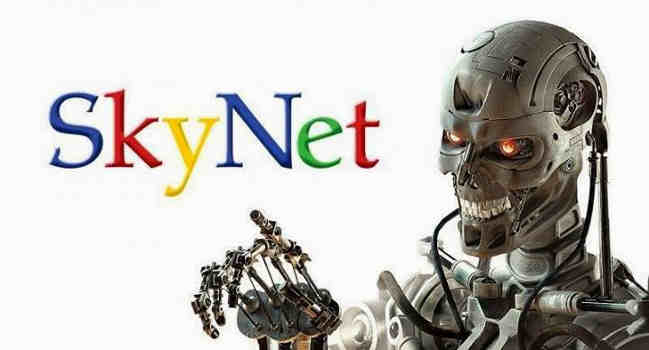10 Ways Technology Will Ultimately Develop a Smart Cyborg That will Take Over The World and Destroy Mankind.
Welcome T The Future
Forget the Zombie Apocalypses, that’s just fantasy. A Robot / Cyborg / Artificial Intelligence Apocalypses is reality. You don’t think so?, Here are a few examples of Technology advancing towards your demise!
Table of Contents
10: Cheetah
They can outrun you. Meet the fastest running robot in the world. Cheetah runs using an off board hydraulic pump and a boom to keep it centered. So far Cheetah can reach a max running speed of 29 MPH. Project “WildCat” is the next step, taking cheetah technology for outdoor field test.
9: PETMAN
Made to mimic a soldier’s physiology. This Anthropomorphic robot was created to test advanced chemical protection suites. It not only can produce a wide range of motions, PETMAN also sweats with rises in body temperature. Plus a humanoid robot in a chemical warfare suit is scary.
8: Atlas
A strong and highly Mobile humanoid robot. Atlas can negotiate its way through all types of terrain. Completely bipedal so his arms are free to move and handle object while in motion. It can also coordinate body moments adapting to the environment. Crawling or climbing using its hand and feet if needed. Laser range finders and a set of cameras built into his head give him all the sensor input needed.
7: LS3
Able to go any where a soldier can. This mule can carry a 400 lb load for a distance of about 20 miles and up to 24 hours between fuel fills. It can follow a squad of troops using its computerized vision with no need for a driver. LS3 can also travel to predetermined locations using GPS and its advanced terrain sensing guidance system.
6: Baxter
Sounds like a friendly, simple and nice name. Baxter is probably one of the most advanced robot out. It is also the most likely to become commercially available. It won’t be long before you will be able to bring Baxter into your own home. He’s a highly articulate robot with a fairly advance AI board. Although he moves slow, he can accomplish almost any task you can.
5: Swarm Kilobots
Harvard University has made a major leap in a branch of AI research called “ Swarm AI”. They have put together a thousand mini-bot that can assemble into shapes on there own without any outside direction. Doesn’t sound like much but this is a huge step into a collective Artificial intelligence. A large collection of robots that work together to complete a goal. An A.I army that can organize and accomplish.
4: VIV
When Apple’s SIRI hit the scene people were impresses. It didn’t take long for the initial Siri amazement to fade. Siri was cool, but not really intelligent. Only able to answer a present range of questions and tasks. The creators of Siri have moved on and they are on the brink of creating a AI program that learns on its on. It will should be able to answer common questions and access the internet for knowledge.
3: DEEPMIND
You can’t leave Google out of the global domination A.I race. Google recently confirmed the acquisition of DeepMind for 500 million. The DeepMind group had also been in talks with Facebook prior. Originally founded by neuroscientist Demis Hassabis Deep Mind’s main objective aren’t clear. Their website doesn’t offer much information as to their project, goals or what they have accomplished. The secrecy only adds to the paranoia, why would 2 of the world internet giants ( Google and FaceBook ) take such interest in an A.I company that doesn’t offer anything other than a vague mission statement?
2: FaceBook DeepLearning
FaceBook started an AI lab back in September 2013, but it wasn’t until Yann Lecun joined the team that they gained some notoriety. LeCun is a pioneer in the AI field. His “Deep learning “speech and image recognition systems has been the inspiration behind most of todays advanced AI systems. His breakthrough development of “Back-propagation algorithm” has became a standard way to train neural networks. At AT&T he created the “Convolutional network model” which can mimic the visual cortex of a living creator. FaceBook claims his works will be used to better gain knowledge of their users needs.
1: Google
Welcome to Skynet Google has came a very long way since their initial algorithm. Although most of us still notice it as a search engine, that only scratches the surface. It uses the familiar search engine as its main source of monetization. But we are not too threatened by its advanced contextual search algo’s . Sure Google does peer into your email, read your text messages, listen into your phone calls, track your whereabouts, but really that’s all to collect personalized advertising info, really.
Here is a few worry some facts about Google you may have not known
Google recently Acquired D-Wave 512 Qubit Quantum Computer system (able to calculate logarithmic problems)
D-wave is not only time Google has collaborated on a project with the NSA. As a matter a fact the relationship has between Google and the NSA is top secret and protected by law.
Google dumps 3.2 billion dollars into a tiny “smart Thermostat” and fire alarm start-up. The acquisition of Nest has raised a few eyebrows and made headlines. But why would Google over pay for Nest.
Google purchases DeepMind an advanced AI company from London which has not openly produces anything more than a tagline on its website.
Boston Dynamic the company that has innovated and produced an army of scary robots is now a branch of Google.
There is currently a AI race. Large global corporations are spending billions of dollars trying to one up the other. Will the winner of this race face a competitive market or will this be a form of global domination.




